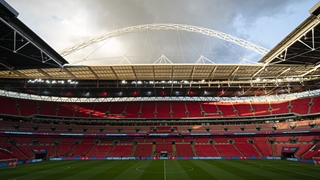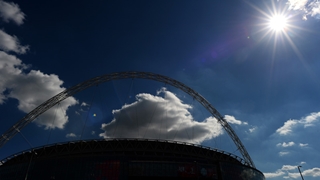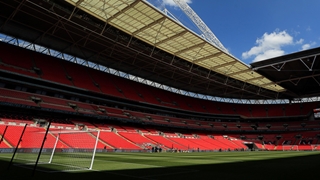
In 2015 I presented to you the FA’s Strategic Plan through to 2020. It was driven by a single purpose – to Unite the Game, Inspire the Nation.
I believed, and the Board agreed, that English football, despite all its great strengths, was operating at less than the sum of its parts.
We have great clubs, players, leagues, referees, coaches and volunteers. A wonderful reach into every community in England and every nation globally. But somehow we fall a little short.
We have had no recent national team success. We have playing experiences at grassroots level that suffers from poor and deteriorating pitches. A volunteer army that’s struggling to organise a simple game of football in a busy world. Women’s football which has been neglected for too long and is in need of a turbo charge of investment. And a governance and decision-making structure questioned by politicians and the public.
I believed then, and I am certain now, that all these challenges are fixable. If we work together, prioritise our efforts and make some big decisions in the interest of the game.
And everyone in this room should be proud of what we have achieved over the last few years. We focused increased investment into St. George’s Park and the young England teams – where the success is clear for everyone to see, both in the trophy cabinet and in the young players banging on first team doors.
We are determined to double the size of the women’s football – and thanks to everyone’s support across all parts of the game – we are well on our way to achieving this goal and along with a Women’s World Cup and potential home Euros to come.
We are investing in digital products and systems to make the running of the game as easy as possible for all our volunteers. The much talked about Player database, first mentioned in 2001, has a realistic target of 5m by next year.
And we made some tough choices about the organisation to release funds to invest in grassroots and community playing facilities and surfaces – which is the number one concern of those who play the game.
We’ve also working closer and more collaboratively with the professional game than at any time in recent years. Very soon this will pay dividends with the creation of a mid-season break, which is a much needed improvement for our clubs and England teams.
We’ve turned the organisation around financially to a point where next season we will nearly double our redistributions back into the game compared to the 2015-16 season – and we’ve secured potentially seven home matches here at Wembley Stadium for the 2020 Euros.
We have, of course, had some missteps on the way. But the culture and inclusion recommendations that we approved earlier this year were an important acknowledgement that we have to learn and improve in this area. Likewise, the way every part of the game, has faced into the challenge of safeguarding – ensuring we are doing everything possible to make the game safe – is a credit to all.
All this we have achieved together. United in collaboration, not seeking to win every argument and see every issue as a power struggle but decisions made by consensus and in the best interests of the game.
And today, of course, we are discussing another big decision. So let me start with what this is not.
Receiving an offer to sell Wembley Stadium is not a “betrayal”. It is not selling the “soul of the game”. Nor is it a desperate action by a desperate organisation. We do not need to sell, and we can and will do the things we have planned to do no matter what.
There is no need for drama, emotive language, or any “meltdowns”. What we have in front of us is simply an opportunity.
This is an opportunity to unleash an unprecedented amount of investment into community football.
It’s an opportunity to make The FA a more profitable organisation year-on-year and increase investment. An opportunity to reconnect the England team with its fans up and down the country. An opportunity to make us simpler and more focused on the essence of what The FA should be about – players, coaches and technical development for all. An opportunity to ensure Wembley gets the investment it needs to still be the home of English football. An opportunity to really reverse The FA’s reputational decline and show the world we are an organisation For All of English football.
But like every opportunity, it comes at a cost. And not all costs are worth paying. I agree with much of what I have read in the media and the private comments I’ve heard from many of you about your concerns. So let me talk through some of these issues as I see them today at the beginning of this process.
Firstly, the price. The price offered is the result of many months of work by ourselves and the leading investment banking advisers Rothschilds. It is considerably higher than the first offer received and represents good value for a part of the organisation that makes us relatively little money and which the running and upkeep costs will only continue to increase.
With the retention of the Club Wembley revenue, and the relinquishing of the costs of running and maintaining the stadium, we will continue to invest in the game at the levels shown to you last December. Instead we will bank an additional £600m. Dispassionately the deal makes economic sense.
Likewise some have questioned the process. The reason we went public with the offer is that we want this to be transparent. Wembley Stadium has public money tied into it, and any potential sale needs to be open and competitive. We have had no other offers to date, but are ready to work with other buyers.
Furthermore, and understandably I know some of you have mentioned this, there is no alternative option to rent to the Jaguars. Renting Wembley Stadium would not improve our financial positon; it would retain our liability for improving the stadium and would not release any value for us.
But of course this is not purely a dispassionate rational decision. Some of you are in the camp of no-sale at any price. We all have emotional and personal reactions and it’s not my place to dismiss them. So instead let me tell you what I know about the potential deal and you can judge for yourself.
We are, of course, partners in Wembley Stadium with public sector funders. When they provided their £161m of capital they did so with a whole range of restrictions on The FA as owners – and those restrictions would not fall away with a sale.
Every restriction we have faced on usage, potential name change, resale options, right down to the availability of a Royal Box will all remain in place through to 2057.
If Shahid Khan owns Wembley Stadium his hands would be as tied as The FA’s have been for the last 19 years. That to me provides some comfort. No change.
Likewise – any deal will contain all the commitments to the football and sporting calendar that Wembley Stadium delivers now. This is one of the main advantages of this deal. NFL is played between September and December. Our current main usage of the stadium is through the spring and summer. The two calendars are in effect complementary, and where we have a clash with England’s autumn fixtures we believe it can create an opportunity to head on the road.
No Cup finals will move and all major tournaments will still be an option for Wembley Stadium. Again, no change.
We would secure long term agreements for those matches – and I am confident that would work well for us as the need for any owner to have the regular ‘content’ to fill the stadium will ensure we have good service at a good price. Furthermore, just like now, The FA would control ticket pricing and revenue. Again, no change.
So we believe it’s a good price and a fair and open process. There are ways in which we can get comfortable that the status of Wembley Stadium, as the iconic home of English football, can be protected well into the future, as it was in the years pre-2000 when we were tenants.
This takes me to whether the opportunity, the potential upside, is one worth reaching for. Well let’s start with some cold facts. One in three pitches is considered ‘not adequate’ by independent assessment. One is six matches postponed this year due to poor facilities. That’s something like 150,000 matches, or 300,000 teams. Anything up to 5m playing opportunities impacted by poor facilities last season alone.
It’s been the number one issue on The FA Grassroots Survey every year since it was introduced. We have half the number of 3G pitches than Germany and only 17 County FAs currently have their own 3G hubsite. These are all facts of English football that sit uncomfortably for me and I know for many of you in this room.
Now, of course, whilst you may recognise this deficit, you may not believe it to be football’s responsibility to fix it. I have a great deal of sympathy for that argument – but I am also a pragmatic man. If we don’t lead, if we don’t take responsibility, a slow decline in pitches will become terminal. So we must step up.
We are, of course, not starting from scratch. The FA and the Premier League have with Sport England been facing this problem for some time since 2000, but we are now at a real turning point. Working with our partners and the Football Foundation we now have a real understanding of size of this problem.
We are for the first time planning facility investment Local Authority by Local Authority – mapping the needs of all parts of the game against an identified pitch supply – of all kinds.
We are 12 months away from having the clear shopping list for every community in England – 3G, grass pitches, small sided, indoor, outdoor. County FA hub, pro-club community hub, Local Authority Parklife hub, club site or school mini-pitch.
We will know the need – no longer relying on the well organised clubs who can work the grant process to come forward but being able to target the biggest opportunities – everywhere. And that is the opportunity. We currently have around £70m a year across the funding partners going into the Foundation – with the match funding where we can get it.
I promise you we will make a decent go at that shopping list whatever happens to Wembley Stadium, but let me paint a different picture.
Let’s say we complete this deal. Every indication to date is that Sport England will want to use their £120m alongside us to go back into community football facilities. Why wouldn’t they by the way? Releasing it from being trapped as equity in Wembley Stadium into community football is much more in tune with their mission to get the population active.
So here is just one potential scenario. From the £600m sale fee we take £150m of capital upfront and boost our collective facility investment over the next three years to £120m a year plus match funding. That would mean a c: £500m accelerated investment into community facilities in the first three years. Then in year four we could take the c: £30m a year endowment interest that is being generated by the remaining £450m in fund and add that to our existing £70m a year. That, with match funding, would be around £130m a year – so that by 2030, just over ten years from the completion of a potential sale, we could have invested over £1bn on community football facilities – and still have a £450m capital fund untouched.
And what would £1bn in ten years really mean in terms of football outcomes? Well it’s hard to be exact but let me again try and paint you the picture.
A doubling of 3G pitches across the country. Every County FA with its own hub facility. Parklife hubs and trusts across the major cities providing great pitches and revenue to improve grass pitches. Investment into National League and Alliance Clubs to us their facilities to enhance their community reach. Pro game Community Trusts and Foundations with great facilities to drive their brilliant programmes on. Major investment into the grass pitch improvement programme. Mini-pitches in schools. Indoor courts for Futsal development.
All of this investment identified by the new Local Football Facilities Plans. All of this investment delivered through the Football Foundation in partnership with the Premier League and Government. And all of this investment sustainable – and every project linked to a central sinking fund to ensure new facilities have the funds tucked away for when they need updating.
We know this works – you have all seen the impact on participation of great facilities. In Sheffield, Parklife sites have great usage with 300k visitors since opening in 2016 and have really driven growth in women’s and girls’ football in the city. One is three users are female, showing the importance of good quality pitches and changing facilities to the women’s game.
So the game has a challenge, a plan to address it – and this sale might just release the funds to make it happen over a reasonable time frame. And that is the opportunity in front of us. The stadium would remain at the heart of English and world football, protected in every way as it is today. And the opportunity for the whole game is, I believe, transformational.
This is a moment where we need to choose what The FA is for. What our priorities should be? To be For All of English football, driving improvements in every community in England at every level of the game? Or for the ownership and careful management of an elite venue?
Many of you rightly say to me and my team on a regular basis – why can’t we tell the good story of all the FA’s great work across the game? Well, actions speak louder than a thousand press releases.
The opportunity that this deal presents is to allow English football – all of us: The FA, the County FAs, the Premier League, the English Football League and the National League – to directly improve the football experience of millions of boys, girls, women and men across England.
To show them that we are a united game For All of English football.









